
Roots
The quiet hours of slumber, a time for the body to mend and restore, often pass without a thought for our strands. Yet, as the world settles into its nightly hush, our hair, particularly textured hair, begins a subtle dialogue with its surroundings. This silent conversation, unfolding over countless nights, holds the potential to reshape the very integrity of each strand. Understanding this profound connection between our sleeping environment and the health of our hair requires a gentle gaze into the foundational elements of hair itself, seeing it not as a simple accessory, but as a living part of our story, intimately linked to the world around it.
Consider the individual hair strand, a marvel of natural design. Each filament, whether it spirals tightly or flows in gentle waves, shares a common architectural blueprint. At its outermost layer lies the Cuticle, a protective shield composed of overlapping, scale-like cells, much like shingles on a roof. Beneath this lies the Cortex, the heart of the hair, giving it strength and elasticity, filled with keratin proteins.
At the core of some hair types, a soft Medulla can be found. For textured hair, the cuticle layers are often fewer and more raised, making these strands naturally more vulnerable to moisture loss and external aggressors. This unique structure means that textured hair requires a more attentive and understanding approach to its preservation, especially during the long stretches of night.
Our hair, particularly textured hair, engages in a subtle, silent dialogue with its sleeping environment, impacting its long-term health.
The inherent characteristics of textured hair also mean its journey from scalp to tip is often a winding one, presenting more opportunities for mechanical stress. The twists and turns of a coil or curl pattern mean that each strand may not lie as smoothly against a surface, increasing the likelihood of friction points. This anatomical reality sets the stage for how environmental conditions during sleep can, over time, quietly contribute to wear.
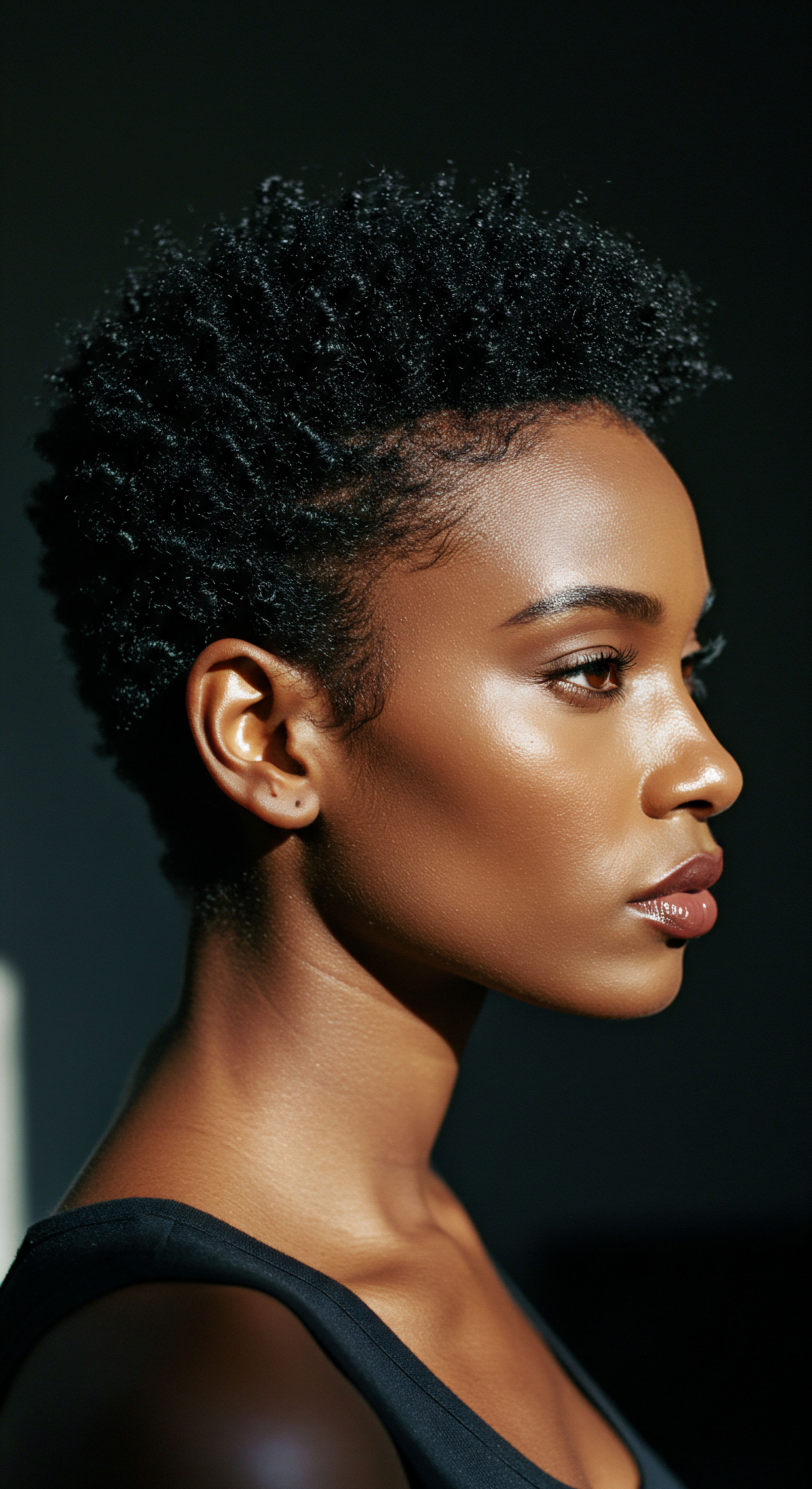
The Hair Strand’s Delicate Architecture
The hair strand, a complex biological fiber, begins its existence within the hair follicle nestled beneath the skin. As it grows, it forms distinct layers, each with a specific purpose. The Cuticle, the outermost layer, acts as the hair’s primary defense against the world. Its scales typically lie flat, creating a smooth surface that reflects light and seals in moisture.
However, for many with textured hair, these scales naturally lift slightly, allowing for greater moisture exchange with the surrounding air. This characteristic, while beautiful in its natural form, also means textured hair can be more susceptible to the drying effects of a low-humidity environment.
The Cortex, residing beneath the cuticle, comprises the majority of the hair’s mass. It is here that the hair’s strength, elasticity, and color are determined. The cortex is rich in keratin, a fibrous protein that provides resilience.
When the cuticle is compromised, the cortex becomes exposed, leading to a loss of structural integrity. The innermost layer, the Medulla, is not present in all hair types and its exact function is still a subject of scientific inquiry, though it is thought to play a role in hair strength and insulation.

How Do Environmental Factors First Touch Hair?
The immediate environment around us, even as we sleep, constantly interacts with our hair. Air temperature, humidity levels, and even the presence of airborne particles can initiate a chain of events that, over time, influence hair health. A room with very dry air, for instance, can act like a sponge, drawing moisture directly from the hair strand, leading to dehydration. Conversely, excessively humid air can cause the hair shaft to swell and the cuticle to lift, making it more prone to frizz and tangling.
The mechanical environment of our sleeping space also plays a quiet yet significant role. The surface our hair rests upon, the way we shift and turn throughout the night, and even the style we wear to bed all contribute to the friction experienced by our strands. This constant, subtle rubbing can abrade the delicate cuticle layer, leading to roughened surfaces and eventually, breakage.
- Cuticle Integrity ❉ The hair’s outermost layer, often more open in textured hair, is highly susceptible to environmental changes.
- Moisture Balance ❉ Hair constantly exchanges water with the surrounding air, influenced by humidity and temperature.
- Mechanical Stress ❉ Friction from bedding and movement during sleep can cause microscopic damage to the hair shaft.
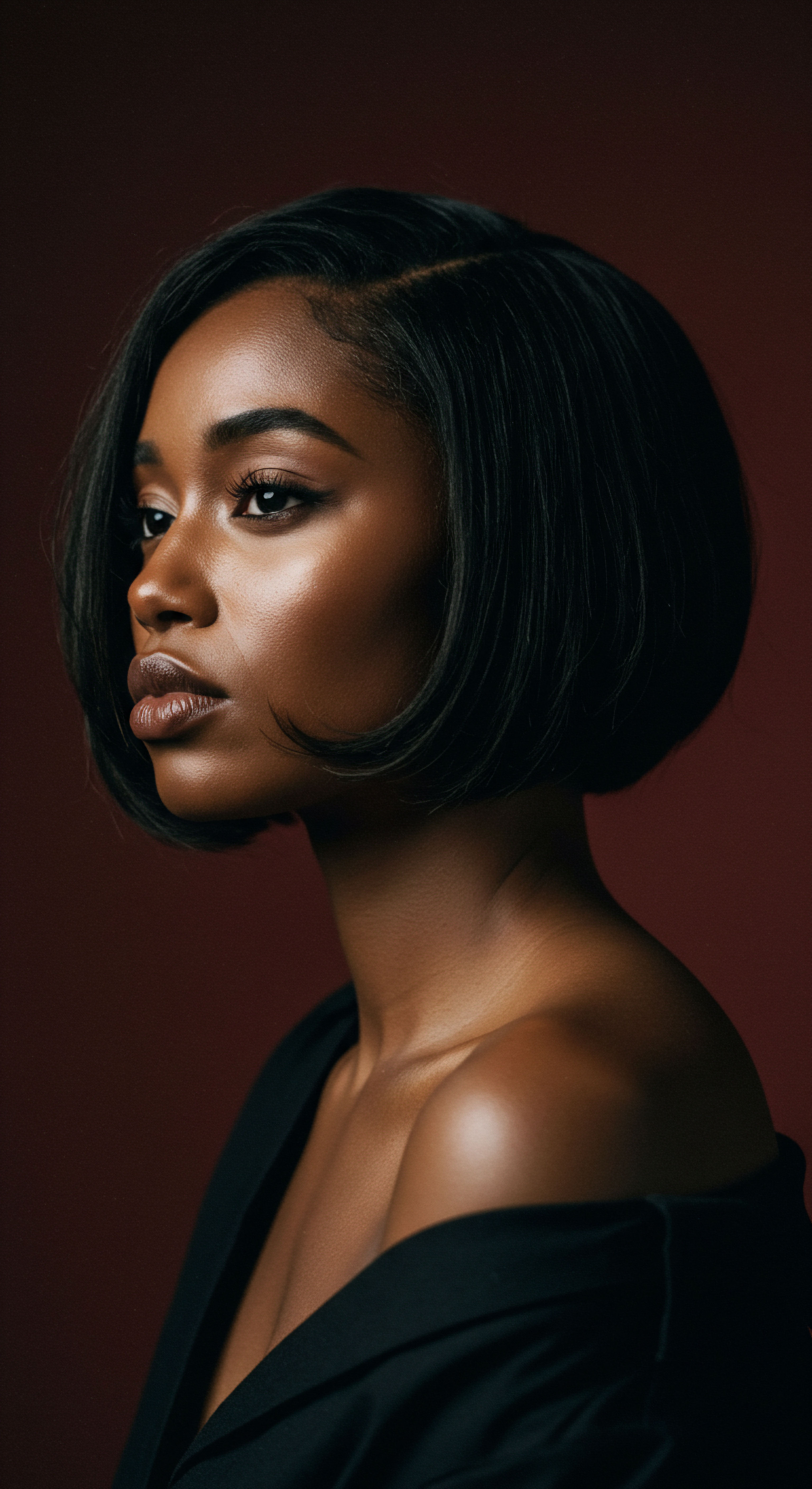
Ritual
As the sun dips below the horizon and the world prepares for rest, we too consider our own preparations for the night. For many, this includes a series of practices, some intentional, others habitual, that touch upon our hair. This quiet period, often overlooked in the grand scheme of hair care, holds a remarkable capacity to either preserve our strands or, unwittingly, contribute to their wear.
The practices we adopt, the surfaces we choose, and the very atmosphere of our sleeping space collectively form a nightly ritual, shaping the destiny of our hair over time. Understanding these practical wisdoms and incorporating them into our routines becomes a gentle act of self-preservation, a quiet declaration of care for our hair’s continued well-being.
One of the most significant yet often unseen contributors to hair damage during sleep is Friction. As we move throughout the night, our hair rubs against pillowcases and bedding. Cotton, a widely used fabric, possesses a fibrous, absorbent surface that can snag hair strands, particularly those with a textured pattern.
This constant rubbing creates microscopic abrasions on the hair’s cuticle, leading to lifted scales, dullness, and ultimately, breakage. The effect is akin to gently sanding a delicate surface; over time, the smooth finish begins to degrade.
Our nightly practices and chosen sleep surfaces significantly influence hair preservation or unintended damage.
Beyond friction, the atmosphere of our sleeping environment plays a quiet but powerful role. The moisture content in the air, or its absence, directly impacts hair hydration. In heated homes during winter or air-conditioned spaces in summer, the air often becomes exceedingly dry.
This parched environment can draw precious moisture from hair strands, leaving them brittle, prone to breakage, and lacking their natural suppleness. Conversely, overly humid conditions can cause the hair shaft to swell, leading to frizz and loss of definition, making it more vulnerable to mechanical stress.

Does Pillowcase Material Matter for Hair Health?
The choice of pillowcase material might seem a minor detail, yet its influence on hair health during sleep is considerable. Fabrics like cotton, while comfortable for skin, can be quite harsh on hair. The absorbent nature of cotton can wick away natural oils and moisture from the hair, leading to dryness. Its coarse fibers create significant friction, particularly for textured hair, which is already prone to tangling and breakage due to its structural pattern.
In contrast, Silk and Satin pillowcases offer a smoother surface, allowing hair to glide rather than snag. These materials are also less absorbent, helping hair retain its natural moisture and oils. The reduced friction translates to less cuticle damage, fewer tangles, and a noticeable decrease in morning frizz and breakage. This simple shift in bedding can make a profound difference in the long-term health and appearance of textured strands.
| Material Type Cotton |
| Hair Interaction High friction, absorbent fibers |
| Impact on Hair Increased breakage, dryness, frizz, cuticle damage |
| Material Type Silk / Satin |
| Hair Interaction Low friction, non-absorbent surface |
| Impact on Hair Reduced breakage, moisture retention, smoother hair |
| Material Type Choosing a smooth, non-absorbent material like silk or satin can significantly protect hair during sleep. |

What Are Effective Nighttime Hair Protection Methods?
Beyond the pillowcase, there are specific protective measures that can be adopted to safeguard hair during sleep. These methods aim to minimize friction, retain moisture, and keep strands neatly contained.
- Protective Styles ❉ Securing hair in loose braids, twists, or a pineapple bun minimizes tangling and keeps strands off the pillow surface. This reduces direct friction and helps maintain curl definition.
- Hair Bonnets or Scarves ❉ Wrapping hair in a silk or satin bonnet or scarf creates a smooth, protective barrier between the hair and the pillow. This is particularly beneficial for textured hair, which can experience significant friction damage.
- Humidifiers ❉ For those living in dry climates or using indoor heating/cooling, a humidifier in the bedroom can help maintain optimal air moisture levels, preventing hair from becoming dehydrated overnight.
These practices, when woven into a consistent nighttime ritual, become a powerful defense against the subtle, cumulative wear that sleep can otherwise impose on our hair. They honor the hair’s natural inclination towards health, offering it the gentle support it needs to truly thrive.

Relay
Beyond the immediate concerns of friction and moisture, how do the persistent, often unseen, environmental influences of our sleep space truly shape the long-term vitality of our hair? This deeper inquiry leads us to a fascinating intersection where the micro-world of the hair strand meets the broader currents of our living spaces and ancestral practices. Here, we move past surface-level observations to consider the cumulative impact of these subtle interactions, drawing upon scientific observations and the quiet wisdom passed down through generations. It is a contemplation of how continuous, seemingly minor environmental conditions can orchestrate a gradual, yet profound, transformation in our hair’s resilience and appearance.
The cumulative effect of environmental conditions during sleep can be compared to the slow erosion of a riverbed. Each night, seemingly insignificant factors—a dry breeze from a vent, the slight tug of a pillow, the microscopic dust particles settling—contribute to a gradual weakening of the hair’s structure. Over months and years, this relentless exposure can lead to chronic dryness, increased porosity, and a diminished capacity for the hair to retain its natural strength and elasticity. For textured hair, already predisposed to moisture loss and fragility, these effects are often amplified, making a dedicated nighttime care regimen not merely a luxury, but a fundamental pillar of preservation.
Subtle nightly environmental factors accumulate, gradually diminishing hair’s resilience and vitality over time.
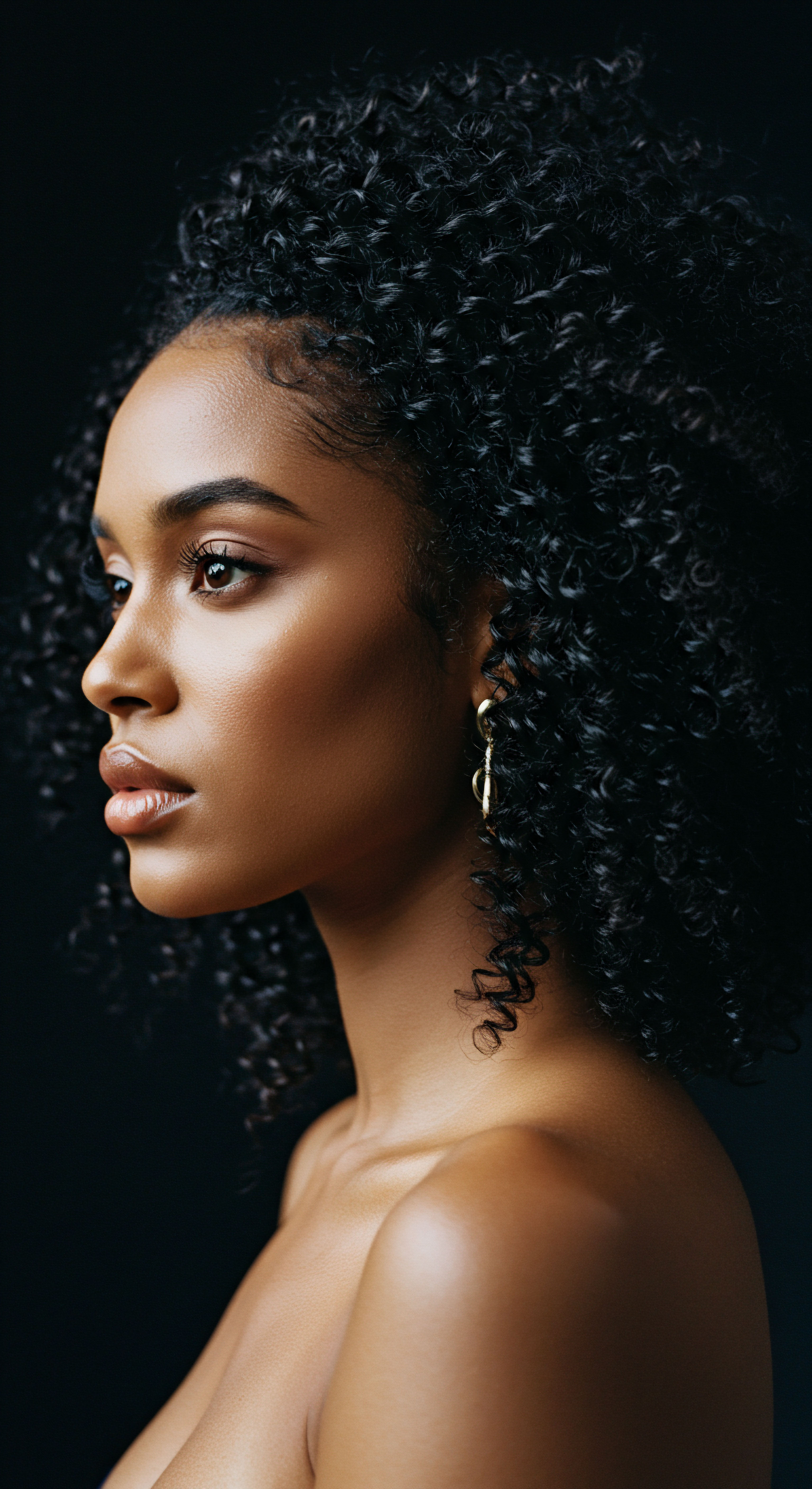
Can Persistent Dry Air Affect Hair’s Internal Structure?
The impact of environmental humidity, particularly low humidity, extends beyond mere surface dryness. Research has shown that prolonged exposure to dry air can influence the internal structure of the hair shaft. Hair, being a hygroscopic material, readily absorbs and releases water. When the surrounding air is consistently dry, hair loses moisture from its cortex, leading to a phenomenon known as “hygral fatigue.” This continuous swelling and contracting, albeit subtle, can weaken the hydrogen bonds within the keratin structure, making the hair more brittle and susceptible to breakage over time.
A study published in the Journal of Cosmetic Science demonstrated that hair exposed to repeated low-humidity cycles exhibited a measurable decrease in its tensile strength and elasticity compared to hair maintained in optimal humidity conditions. This indicates a deeper, structural compromise that goes beyond superficial dryness, underscoring the importance of managing ambient humidity, especially during extended periods of sleep.
Furthermore, the hair’s lipid barrier, a thin layer of natural oils on the cuticle, is also vulnerable to dry environmental conditions. This barrier is essential for sealing the cuticle and preventing excessive moisture loss. In a consistently dry sleeping environment, this lipid layer can become depleted more rapidly, leaving the cuticle more exposed and prone to lifting and damage from friction. This creates a vicious cycle ❉ dry air compromises the protective barrier, leading to further moisture loss and increased vulnerability to mechanical stress.

What Role Do Cultural Practices Play in Nighttime Hair Preservation?
Across diverse cultures, the practice of protecting hair during sleep is not a modern invention but a wisdom passed down through generations. From intricate braiding traditions to the use of head coverings, these practices reflect a deep understanding of hair’s vulnerability and the need for its preservation, particularly during rest. In many African and Afro-diasporic cultures, wrapping hair in scarves or bonnets before sleep has been a long-standing tradition. This practice, often rooted in both practical hair care and cultural identity, serves multiple purposes ❉ it protects delicate styles, prevents tangling, and minimizes friction, thus safeguarding the hair from environmental wear.
These traditional methods often align remarkably with modern scientific understanding of hair protection. The use of smooth fabrics like silk or satin, whether in historical head wraps or contemporary bonnets, effectively reduces the mechanical stress that cotton or other rough materials can impose. This confluence of ancestral knowledge and contemporary science provides a powerful testament to the efficacy of these simple yet profound rituals in preserving hair health over the long arc of a lifetime. The continuity of these practices speaks to their enduring value and their quiet power in maintaining hair’s vibrancy against the subtle challenges of daily life, including the nocturnal environment.
| Indicator Increased Frizz |
| Environmental Factor Low or High Humidity |
| Mechanism of Damage Cuticle lifting due to moisture fluctuation |
| Indicator Excessive Breakage |
| Environmental Factor Friction (rough fabrics) |
| Mechanism of Damage Abrasion of cuticle, weakening of hair shaft |
| Indicator Dullness / Lack of Shine |
| Environmental Factor Cuticle damage, moisture loss |
| Mechanism of Damage Disrupted cuticle surface, poor light reflection |
| Indicator Chronic Dryness |
| Environmental Factor Low Humidity, Absorbent fabrics |
| Mechanism of Damage Moisture evaporation from hair shaft |
| Indicator Observing these indicators can suggest the need for adjustments in one's sleep environment and hair care ritual. |
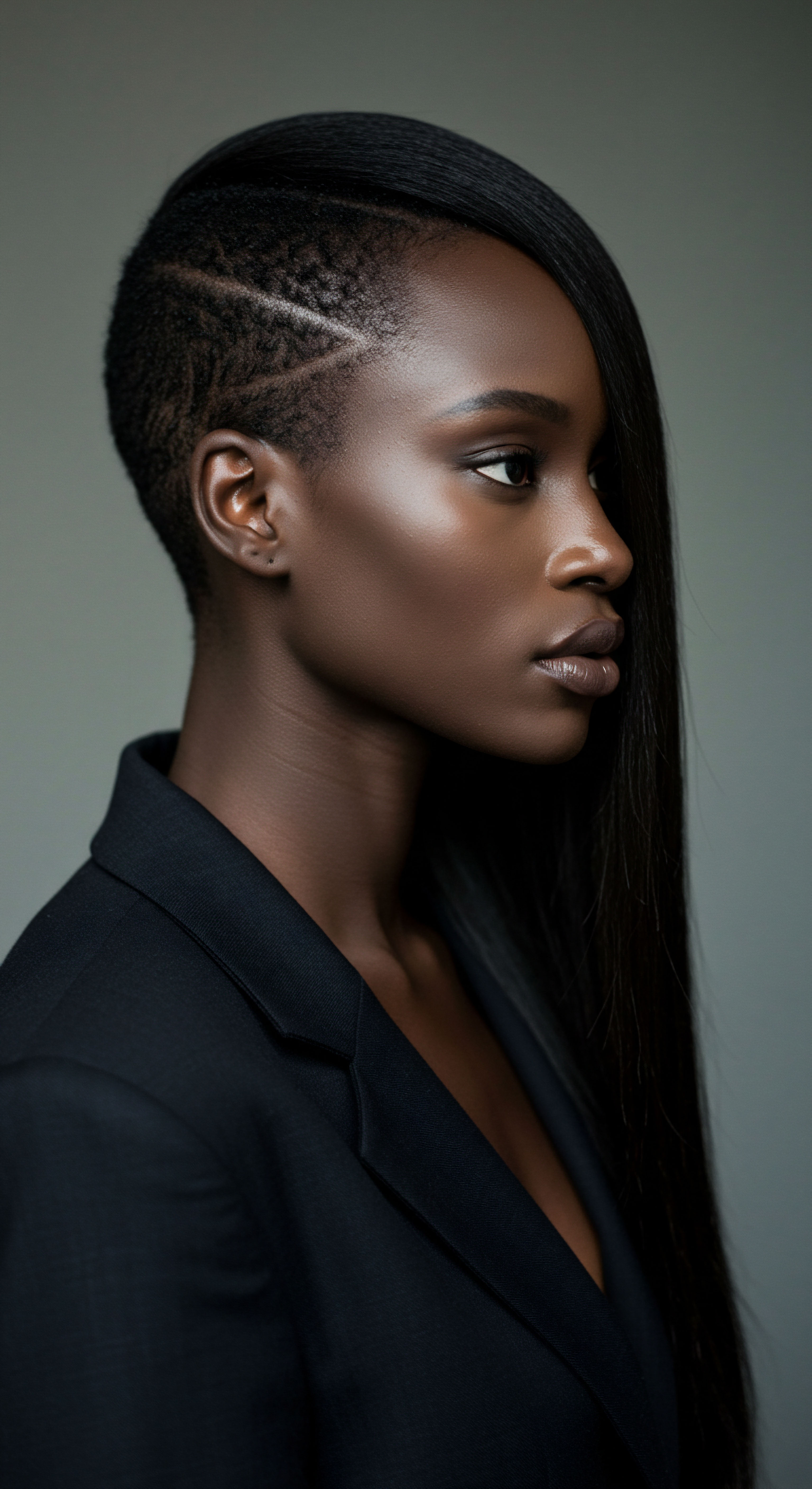
How Do Sleep Positions Impact Hair Breakage?
The way we position ourselves during sleep can also significantly influence the mechanical stress on our hair. Side and stomach sleepers, for example, often experience more direct and prolonged contact between their hair and the pillow surface compared to back sleepers. This sustained pressure and friction, particularly on one side of the head, can lead to localized areas of wear and breakage. The constant shifting and rubbing against the pillow can cause the hair to tangle and pull, leading to mechanical damage that accumulates over time.
For individuals with very long or highly textured hair, this can result in noticeable thinning or breakage along the sides or nape of the neck. While completely altering sleep positions may be challenging, understanding this dynamic reinforces the value of protective measures like bonnets, scarves, or specific protective styles. These act as a buffer, distributing pressure and reducing direct hair-to-pillow friction, regardless of sleeping posture. This awareness transforms a seemingly passive act of rest into an active opportunity for hair preservation.
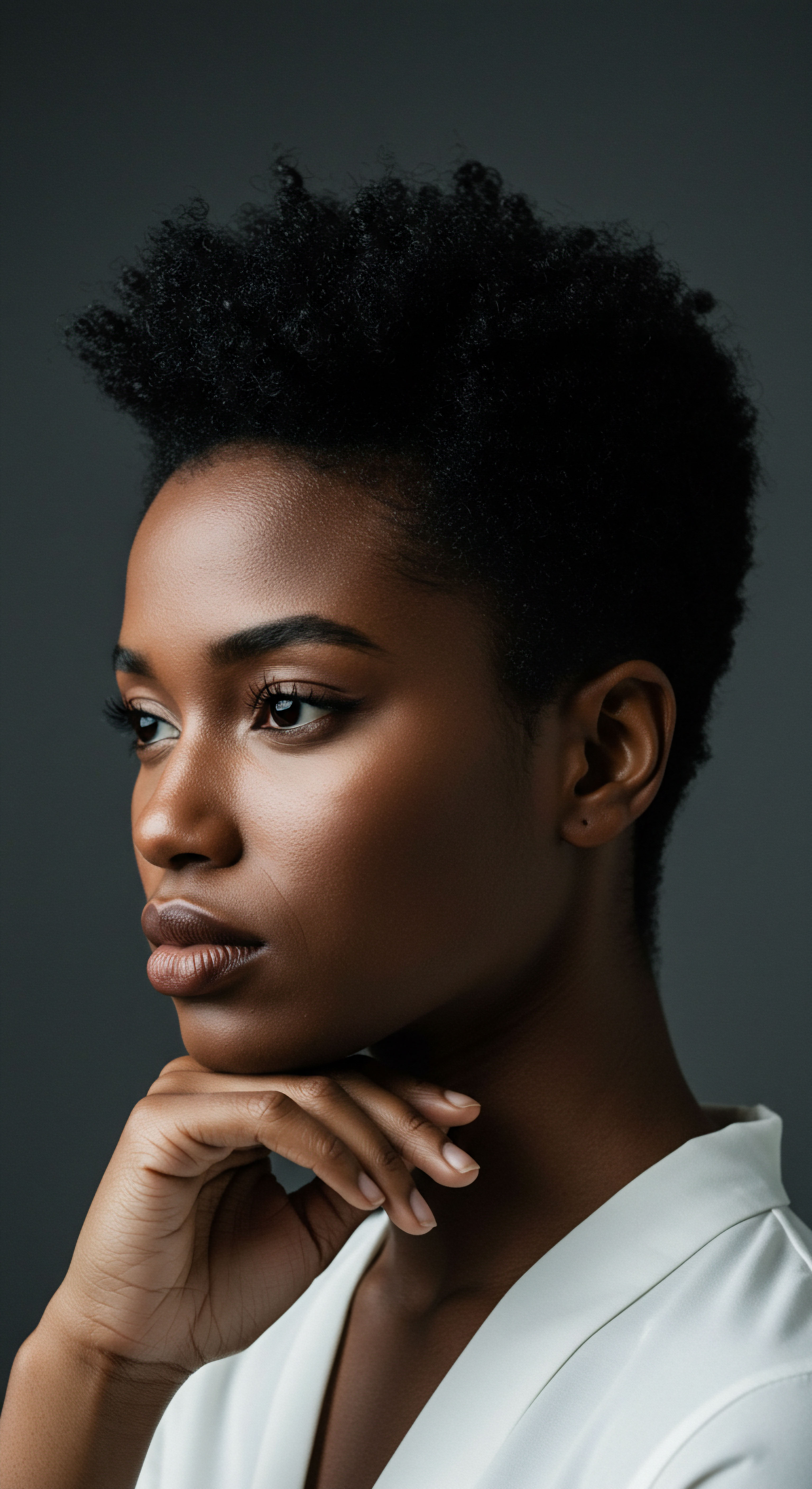
Reflection
As we gently close this exploration of sleep’s quiet influence on our hair, a deeper understanding emerges ❉ the hours of rest are not merely a pause in our day, but an active landscape where our strands engage with their surroundings. The subtle interplay of humidity, friction, and protective practices, woven into the fabric of our nightly rituals, holds a quiet power to shape our hair’s destiny. Recognizing this intricate dance allows us to move beyond reactive care, embracing a thoughtful, anticipatory approach that honors the unique nature of textured hair. May this insight inspire a serene, knowing approach to nighttime care, ensuring our strands continue their journey with grace and enduring strength.

References
- Robbins, C. R. Chemical and Physical Behavior of Human Hair. 5th ed. Springer, 2012.
- Marsh, J. M. Hair Care ❉ An Illustrated Guide. John Wiley & Sons, 2017.
- Barel, A. O. Paye, M. & Maibach, H. I. Handbook of Cosmetic Science and Technology. 4th ed. CRC Press, 2014.
- Khazaka, J. & Maibach, H. I. Textbook of Cosmetic Dermatology. 5th ed. CRC Press, 2018.
- Kerr, G. The Hair Structure and Its Relation to Cosmetic Treatment. Elsevier, 2005.
- Trueb, R. M. & Heinrich, D. The Hair ❉ Its Essential Role in Health and Disease. Springer, 2019.
- Gavazzoni Dias, M. F. R. Hair Cosmetics ❉ An Overview. Springer, 2016.
- Dawber, R. P. R. & Van Neste, D. Hair and Scalp Disorders ❉ Clinical and Experimental Dermatology. 2nd ed. Blackwell Science, 2004.